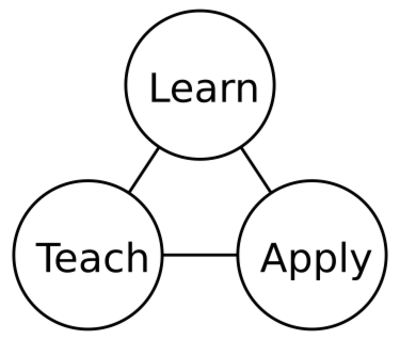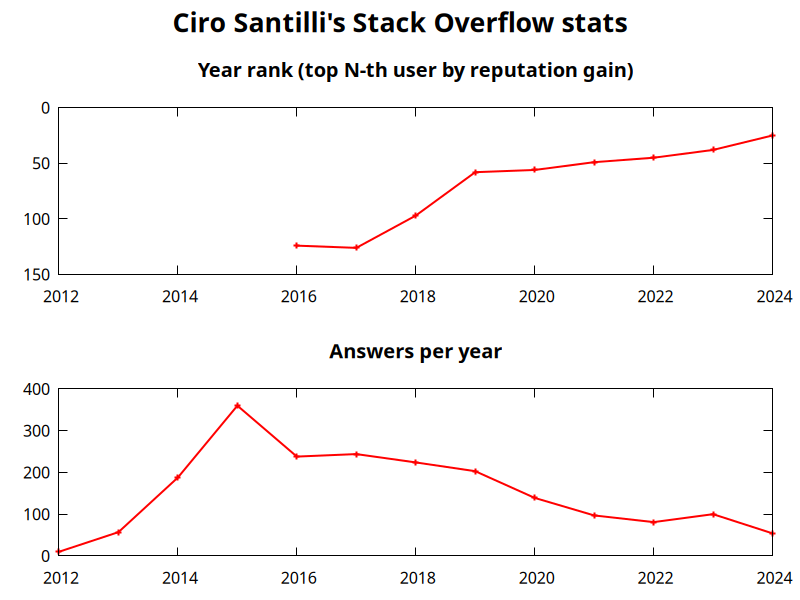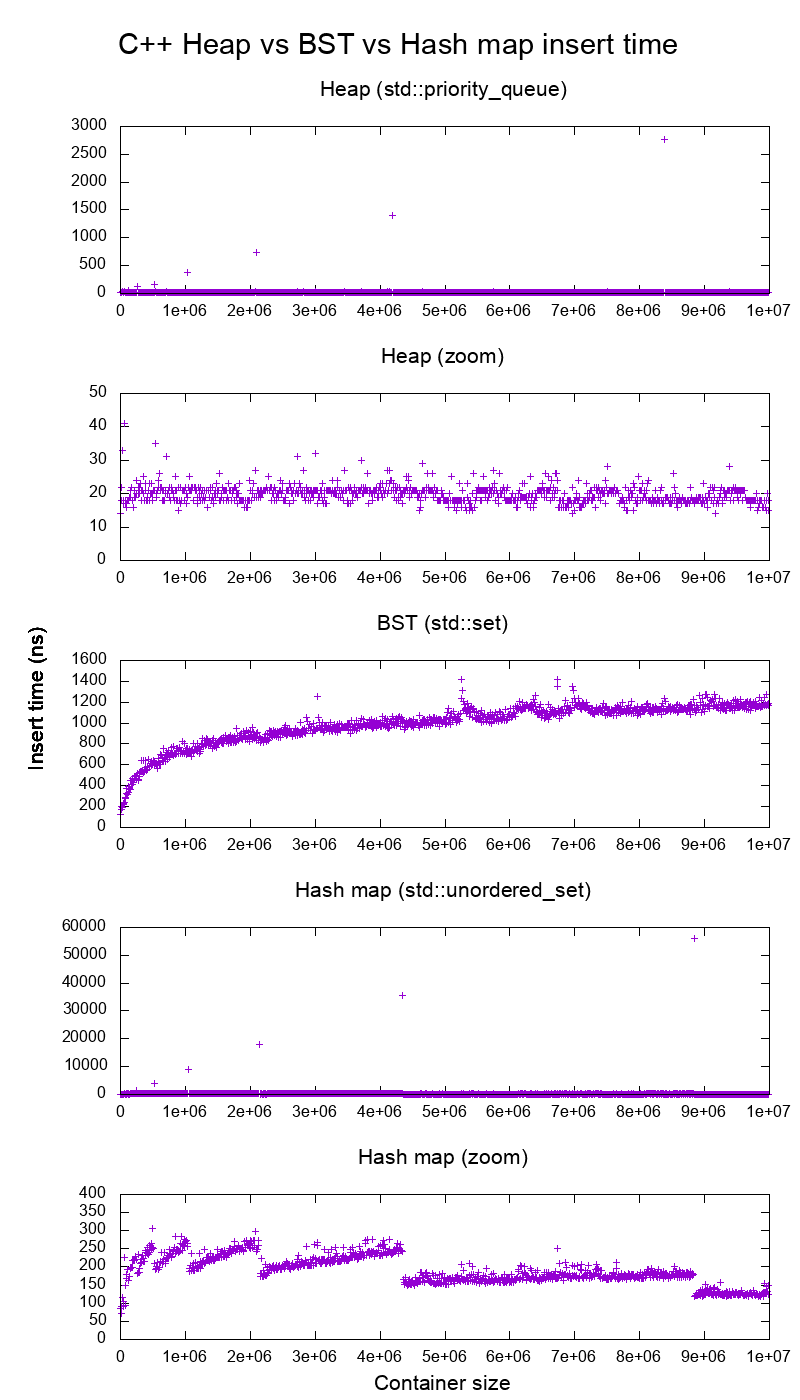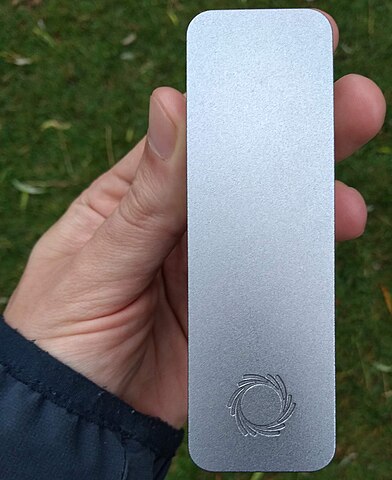Ciro Santilli's sinophily Updated 2025-10-27
Two things come to mind when Ciro Santilli thinks about his sinohpilia.
There is a strong "Ciro Santilli's knowledge hoarding" side to it. Ciro has decided that he has to know EVERYTHING about China. It's culture. It's people. It's art. And so once that has been decided, it becomes inevitable.
But of course, there is also the "which part of Ciro's inner being led to that hoarding decision" part of things. Mishima's quote often comes to mind:
Exoticism is undoubtedly part of it.
Maybe it has something to do with growing up observing 5th+ generation Japanese Brazilians immigrants, well, being Asians and crushing it academically. But also being quiet people, and sometimes misfits. I.e., nerds.
Maybe there is also something to do with the influence Japanese anime, highly popular during Ciro's childhood in Brazil. Ciro, unlike many of his friends, left that relatively early, as he got into the deeper pleasures of natural sciences and then more traditional Asian culture. But still.
And finally perhaps the correlation between sofware engineers and Asian fetish and the correlation between software engineers and Buddhism.
Fluid mechanics Updated 2025-10-27
Boooooring. Except for Navier-Stokes existence and smoothness. That's OK.
Navier-Stokes existence and smoothness Updated 2025-10-27
A report on the Navier-Stokes Problem by Vladimir Šverak
. Source. 2025. The eye in Ciro Santilli's website banner Updated 2025-11-18
Ciro was trying to make his face fit on the banner. But it is hard because faces are square and text is long.
At this moment, Ciro knew what to do.
Finally, by adding another eye to the footer of the page, this also added a symbolic dimension to things: the pages contain what is in between Ciro's eyes: his brain: Section "Braindumping".
The concept, like any other, is not in itself new and has been used by others, Ciro just independently rediscovered it again:
Synthetic virus Updated 2025-11-18
Man-made virus!
TODO: if we had cheap de novo DNA synthesis, how hard would it be to bootstrap a virus culture from that? github.com/cirosantilli/cirosantilli.github.io/issues/60
Is it easy to transfect a cell with the synthesized DNA, and get it to generate full infectious viral particles?
If so, then de novo DNA synthesis would be very similar to 3D printed guns: en.wikipedia.org/wiki/3D_printed_firearms.
It might already be possible to order dissimulated sequences online:
List of subtitle file formats Updated 2025-11-18
Ciro Santilli's hardware Internet speed Updated 2025-11-18
Home 2017 TalkTalk 38Mbps nominal, Google M-lab speed test:
- 36.4 Mbps download
- 9.15 Mbps up
- 58 ms latency over 80km of first world
Home 2025 Giffgaff
Home 2025 Sky Broadband WiFi Max Hub SR213 (SR213-02-UK-wht) 1GBPS:Admin at 192.168.0.1/ username admin password same as wifi password.
- Lenovo ThinkPad P14s gen4 amd
- wired to fiber box:
- wireless sitting next to router:
- Google Pixel 7a
- wireless sitting next to router: 414 down 107 up. Receiver bound which is funny.
Inscription (blockchain) Updated 2025-11-18
Data that is inscribed in a blockchain as a way to perpetuate the data, rather than to follow the main intended purpose of the given blockchain, e.g. ASCII art instead of financial transactions on the Bitcoin blockchain.
Uncanny valley Updated 2025-11-05
Side project time Updated 2025-11-05
Rotate object around a point in Inkscape Updated 2025-11-05
Set SVG background color in Inkscape Updated 2025-11-05
This is related to the underlying SVG pain point of SVG background color:
Silk Road (marketplace) Updated 2025-11-05
Ciro Santilli has become slightly obsessed with this story, and the main mastermind Ross Ulbricht.
The best article available so far is: www.theregister.co.uk/2019/01/29/how_i_caught_silk_road_mastermind (archive) which summarizes what one of the investigators said in a 2019 French computer security conference.
The key living posts are:
- stackoverflow.com/questions/15445285/how-can-i-connect-to-a-tor-hidden-service-using-curl-in-php (archive) which was originally asked under the real name, and then the username was changed to "Frosty", which matches one of the server's logins after the laptop was captured
- altoid early Silk Road mention: bitcointalk.org/?topic=175.70;wap2 (archive)
The big question is of course how libertarian free market ideologically motivated the website was, and how purely criminal greed it was.
The magnitude of the early operational security mistakes does make Ciro think that Ross did it "because he could" and "for the lolz" in a real world Breaking Bad way.
The entry in Ross' diary does resonate a lot with Ciro and any entrepreneur, full diary at: www.wired.com/2015/01/heres-secret-silk-road-journal-laptop-ross-ulbricht/ (archive).
[i]n 2011," [I believe I will be] "creating a year of prosperity and power beyond what I have ever experienced before,Silk Road is going to become a phenomenon and at least one person will tell me about it, unknowing that I was its creator."
Having this kind of feeling, is the greatest thing any human can have, and what motivates all great things.
Capitalizing in illegal things though is a cheat, big things take longer than a few years to reach, but reaching them is that much more satisfying as well.
Other interesting quotes:which Ciro also feels, see don't be a pussy, and:
Everyone knows I am working on a bitcoin exchange. I always thought honesty was the best policy and now I didn't know what to do. I should have just told everyone I am a freelance programmer or something, but I had to tell half truths. It felt wrong to lie completely so I tried to tell the truth without revealing the bad part, but now I am in a jam. Everyone knows too much. Dammit.
Also very worth reading is the San Francisco flat mate account: www.vice.com/en_us/article/ae3q8g/my-roommate-the-darknet-drug-lord (archive).
The murder for hire allegations are also interesting: mashable.com/2013/10/03/silk-road-hits, he paid 80k dollars to undercover DEA agents!
Except for the fact that Ross was an 80 million Dollar drug lord, those accounts sound exactly like what you would expect from any other nerdy startup founder! The:
- "just do it" strategy effectively going to a minimal viable product (manual transaction management!), while making many mistakes along the way, including hiring mistakes and successes when scaling is needed
- the hardship of self bootstrapping your own social network (here with some kilos of mushrooms)
- the variety of periods, from relatively calm, to hair pulling stress during big changes
It is also amusing to see very concretely the obvious fact that the FBI can get a subpoena for all accounts you ever had, e.g. they knew his laptop model from Amazon and brought a corresponding power cable to the arrest! If you are going to be a cyber criminal, don't use your real name, ever!
Should justice be blind? Maybe. But it does hurt for mere non-blind men to see it sometimes. Especially when drug liberalization is involved.
Inkscape Updated 2025-11-05
Personality type Updated 2025-11-05
How to mine Monero Updated 2025-11-05
Ubuntu 20.10 as per xmrig.com/docs/miner/build/ubuntu:At minexmr.com/#getting_started we see that all you then need is a single CLI command:Seems simple, well done devs!
sudo apt install git build-essential cmake libuv1-dev libssl-dev libhwloc-dev
git clone https://github.com/xmrig/xmrig.git
mkdir xmrig/build && cd xmrig/build
cmake ..
make -j$(nproc)xmrig -o pool.minexmr.com:4444 -u <your-monero-address>Benchmark on Lenovo ThinkPad P51 (2017) as per xmrig.com/docs/miner/benchmark:gives:which according to the minexmr.com mining pool would generate 0.0005 XMR/day, which at the February 2021 rate of 140 USD/XMR is 0.07 USD/day. The minimum payout in that pool is 0.004 XMR so it would take 8 days to reach that.
./xmrig --bench=1M948.1 h/sSo clearly, application-specific integrated circuit mining is the only viable way of doing this.
www.makeuseof.com/cryptos-you-can-mine-at-home/ is a completely full of bullshit article that says otherwise. How can someone publish that!
Automatic programming Updated 2025-11-30
The ultimate high level of which is of course to program with:which is basically the goal of artificial general intelligence, especially according to The Employment Test definition of AGI.
The term has not always had that sense:sums it up.
automatic programming has always been a euphemism for programming in a higher-level language than was then available to the programmer
Sponsor Ciro Santilli's work on OurBigBook.com Progress updates Updated 2025-11-21
Education is broken Updated 2025-11-21
Once Ciro was at a University course practical session, and a graduate was around helping out. Ciro asked if what the graduate did anything specifically related to the course, and they replied they didn't. And they added that:Even though Ciro was already completely disillusioned by then, that still made an impression on him. Something is really wrong with this shit.
One has to put the bread on the table.
Other people that think that the educational system is currently bullshit as of 2020:
- Einstein, quoted in The New York Times, March 13 1949, p. 34:[ref]
- Ron Maimon
- Xavier Niel: fortune.com/2018/11/30/billionaire-xavier-niel/ "Want This Billionaire's Attention? Drop Out of School" (2018). He also created 42.
- Year On
- by Zach Caceres
- Anand Raja submission "Students and Universities": publications.parliament.uk/pa/cm200809/cmselect/cmdius/170/170ii.pdf, www.linkedin.com/in/anandraja/.
- xsrus.com/life-school-and-the-80-20-rule. Also GPA 2.0 linked from xsrus.com/ to xsrus.com/gpa-2.0 but down now
- A Mathematician's Lament by Paul Lockhart www.maa.org/external_archive/devlin/LockhartsLament.pdf
- www.learningforreal.org/quotes/ quotes Elbert Hubbard:She's somewhat focused on the performing arts, but what she says applies basically equally well to the natural sciences. A talk: www.youtube.com/watch?v=ggYL9gQeVEk She talks about authentic learning.
- www.youtube.com/watch?v=iG9CE55wbtY Do schools kill creativity? by Sir Ken Robinson (2017)
- Erik Finman thinks school is broken
- sociable.co/technology/silicon-valley-education-students-entrepreneurs/ Bringing Silicon Valley into Schools: How to Make Students Entrepreneurs of Their Own Education (2016)
- hackeducation.com/2015/04/25/factory-model The Invented History of 'The Factory Model of Education' by Audrey Watters (2015)
- www.forbes.com/councils/forbescoachescouncil/2025/04/17/the-ai-fear-factor-why-leaders-resist-and-how-to-move-forward/ The Single Best Idea for Reforming K-12 Education by Steve Denning (2011)
The problem with education by Ciro Santilli
. Source. In this video Ciro Santilli exposes his fundamental philosophy regarding why Education is broken. This philosophy was the key motivation behind the failed OurBigBook Project.Educational systems are carried by Indian YouTubers meme
. Source. Over a Dmitriy Khaladzhi carrying a horse over his shoulders meme template.Peter Gregory from Silicon Valley shows his hate for university in a fake TED talk
. Source. Key moment: someone from the crowd cries:to which the speaker replies:The true value of snake oil is intangible as well.
David Deutsch on Education interviewed by Aidan McCullen (2019)
Source. Key quote that hits the nail:
So right... the purpose of education is not to teach facts. The purpose of education is to propose ways of thinking, which students themselves must try to apply and decide if it suits them! And use the patterns of thinking that are useful to reach their goals.
Like Noam Chomsky, he proposes education has been a system of indoctrination more than anything else e.g. twitter.com/daviddeutschoxf/status/1406374921748496386:At twitter.com/DavidDeutschOxf/status/1051475227476185089 another good quote by Churchill:
All compulsory education, "tough" or not, "love" or not, in camps or not, and whether it "traumatises" or not, is a violation of human rights.
Headmasters have powers at their disposal with which Prime Ministers have never yet been invested.
Quote selection by Charles Bukowski (2016)
Source. Generally speaking, you're free until you're about 4 years old. Then you go to grammar school and then you start becoming... oriented and shoved into areas. You lose what individualism you have, if you have enough of course, you retain some of it... Then you work the 8 hour job with almost a feeling of goodness, like you're doing something. Then you get married like marriage is a victory, and you have children like children is a victory... Marriage, birth, children. It's something they have to do because there's nothing else to do. There's no glory in it, there's no steam, there's no fire. It's very, very flat... You get caught into the stricture of what you're supposed to be and you have no other choice. You're finally molded and melded into what you're supposed to be. I didn't like this.
Home Updated 2025-12-02
Check out: OurBigBook.com, the best way to publish your scientific knowledge. It's an open source note taking system that can publish from lightweight markup files in your computer both to a multi-user mind melding dynamic website, or as a static website. It's like Wikipedia + GitHub + Stack Overflow + Obsidian mashed up. Source code: github.com/ourbigbook/ourbigbook.
Sponsor me to work on this project. For 400k USD I will quit my job or not get a new job and work on OurBigBook full time for a second year to try and kickstart The Higher Education Revolution. Status: ~44k / 400k USD. At 4M USD I retire/tenure and work on open STEM forever. How to donate: Section "Sponsor Ciro Santilli's work on OurBigBook.com".
I first quit my job 1st June 2024 to work on the project for 1 year after I reached my initial 100k goal mostly via a 1000 Monero donation. For a second follow up year, I increased my requirement to 400k USD to give me more peace of mind as I'm destroying my career in the process. A second year greatly improve chances of success: on year one I improved my tech, on year two I want to come guns blazing to solve courses and get users.
Mission: to live in a world where you can learn university-level mathematics, physics, chemistry, biology and engineering from perfect free open source books that anyone can write to get famous. More rationale: Section "OurBigBook.com"
Explaining things is my superpower, e.g. I was top user #39 on Stack Overflow in 2023[ref][ref] and I have a few 1k+ star educational GitHub repositories[ref][ref][ref][ref]. Now I want to bring that level of awesomeness to masters level Mathematics and Physics. But I can't do it alone! So I created OurBigBook.com to allow everyone to work together towards the perfect book of everything.
My life's goal is to bring hardcore university-level STEM open educational content to all ages. Sponsor me at github.com/sponsors/cirosantilli starting from 1$/month so I can work full time on it. Further information: Section "Sponsor Ciro Santilli's work on OurBigBook.com". Achieving what I call "free gifted education" is my Nirvana.
This website is written in OurBigBook Markup, and it is published on both cirosantilli.com (static website) and outbigbook.om/cirosantilli (multi-user OurBigBook Web instance). Its source code is located at: github.com/cirosantilli/cirosantilli.github.io and also at
cirosantilli.com/_dir and it is licensed under CC BY-SA 4.0 unless otherwise noted.To contact Ciro, see: Section "How to contact Ciro Santilli". He likes to talk with random people of the Internet.
GitHub | Stack Overflow | LinkedIn | YouTube | Twitter | Wikipedia | Zhihu 知乎 | Weibo 微博 | Other accounts
Besides that, I'm also a freedom of speech slacktivist and recreational cyclist. I like Chinese traditional music and classic Brazilian pop. Opinions are my own, but they could be yours too. Tax the rich.
Let's create an educational system with:
- no distinction between university and high school, students just go as fast as they can to what they really want without stupid university entry exams
- fully open source learning material
- on-demand examinations that anyone can easily take without prerequisites
- granular entry selection only for space in specific laboratories or participation in specific novel research projects
I offer:
- online private tutoring for:
- any STEM university course
- passionate younger STEM students (any age) who want to learn university level material and beyond. Can your kid be the next Fields Medalist or Nobel Prize winner? I'm here to help, especially if you are filthy rich! I focus moving students forward as fast as they want on and on producing useful novel tutorials and results
Let your child be my Emile, and me be their Adolfo Amidei, and let's see how far they can go! I will help take your child:and achieve their ambitious STEM goals!- into the best universities
- into the best PhD programs
- educational consulting for institutions looking to improve their STEM courses
- do you know that course or teacher that consistently gets bad reviews every year? I'll work with the teacher to turn the problem around!
- are you looking to create a consistent open educational resources offering to increase your institutions internationally visibility? I can help with that too.
My approach is to:For minors, parents are welcome to join video calls, and all interactions with the student will be recorded and made available to parents.
- propose interesting research projects. The starting point is always deciding the end goal: Section "Backward design"
- learn what is needed to do the project together with the student(s)
- publish any novel results or tutorials/tools produced freely licensed online, and encourage the student to do the same (Section "Let students learn by teaching", digital garden)
I have a proven track of explaining complex concepts in an interesting and useful way. I work for the learner. Teaching statement at: Section "How to teach". Pricing to be discussed. Contact details at: Section "How to contact Ciro Santilli".
I am particularly excited about pointing people to the potential next big things, my top picks these days are:I am also generally interested in:
- quantum computing
- AGI research, in particular AI code generation, automated theorem proving and robotics
- assorted molecular biology technologies
- 20th century physics, notably AMO and condensed matter
- the history of science, and in particular trying to look at seminal papers of a field
Ciro Santilli's amazing Stack Overflow profile
. Ciro contributes almost exclusively by answering question he Googles into out of his own need, and never by refreshing the newest question of big tags for low hanging fruit! More information at: Section "Ciro Santilli's Stack Overflow contributions".Ciro Santilli's Stack Overflow stats
. Further methodology details at: Figure "Ciro Santilli's Stack Overflow stats".The problem with education by Ciro Santilli
. Source. In this video Ciro Santilli exposes his fundamental philosophy regarding why Education is broken. This philosophy was the key motivation behind the failed OurBigBook Project.OurBigBook Web topics demo
. Source. The OurBigBook topic feature allows users to "merge their minds" in a "sort by upvote"-stack overflow-like manner for each subject. This is the killer feature of OurBigBook Web. More information at: docs.ourbigbook.com/ourbigbook-web-topics.OurBigBook dynamic article tree demo
. Source. The OurBigBook dynamic tree feature allows any of your headers to be the toplevel h1 header of a page, while still displaying its descendants. SEO loves this, and it also allows users to always get their content on the correct granularity. More information at: docs.ourbigbook.com/ourbigbook-web-dynamic-article-tree.OurBigBook local editing and publishing demo
. Source. With OurBigBook you can store your content as plaintext files in a Lightweight markup, and then publish that to either OurBigBook.com to get awesome multi-user features, or as a static website where you are in full control. More information at: docs.ourbigbook.com/publish-your-content.Top Down 2D continuous game with Urho3D C++ SDL and Box2D for Reinforcement learning by Ciro Santilli (2018)
Source. More information: Section "Ciro's 2D reinforcement learning games". This is Ciro's underwhelming stab at the fundamental question: Can AGI be trained in simulations?. This project could be taken much further.Water Margin tribute to Chinese dissidents by Ciro Santilli (2022)
Source. Part of Ciro Santilli's campaign for freedom of speech in China, see also: cirosantilli.com/china-dictatorship/water-margin.Lenovo ThinkPad T430 running a BIOS hello world
. This uses Ciro Santilli's project x86 bare metal examples with source code at: github.com/cirosantilli/x86-bare-metal-examplesLinux Kernel Module Cheat presentation
. Source. This project, with source code at: github.com/cirosantilli/linux-kernel-module-cheat, aims to be the perfect emulation setup to study and develop the Linux kernel, kernel modules, QEMU, gem5 as well as x86_64, ARM userland and baremetal assembly and more.My Bitcoin inscription museum by Ciro Santilli
. Source. Introductory video to Section "Cool data embedded in the Bitcoin blockchain". -------------------------------------
| Force of Will 3 U U |
| --------------------------------- |
| | //////////// | |
| | ////() ()\////\ | |
| | ///_\ (--) \///\ | |
| | ) //// \_____///\\ | |
| | ) \ / / / / | |
| | ) / \ | | / _/ | |
| | ) \ ( ( / / / / \ | |
| | / ) ( ) / ( )/( ) \ | |
| | \(_)/(_)/ /UUUU \ \\\/ | | |
| .---------------------------------. |
| Interrupt |
| ,---------------------------------, |
| | You may pay 1 life and remove a | |
| | blue card in your hand from the | |
| | game instead of paying Force of | |
| | Will's casting cost. Effects | |
| | that prevent or redirect damage | |
| | cannot be used to counter this | |
| | loss of life. | |
| | Counter target spell. | |
| `---------------------------------` |
| l
| Illus. Terese Nelsen |
-------------------------------------Code 1.
ASCII art of a Force of Will Magic: The Gathering card inscribed in the Bitcoin blockchain
. Artist unknown, uploaded December 2014. Part of Section "Cool data embedded in the Bitcoin blockchain" where Ciro Santilli maintains a curated list of such interesting inscriptions.
This was a small project done by Ciro for artistic purposes that received some attention due to the incredible hype surrounding cryptocurrencies at the time. Ciro Santilli's views on cryptocurrencies are summarized at: Section "Are cryptocurrencies useful?".
YellowRobot.jpgJPG image fully embedded in the Bitcoin blockchain depicting some kind of cut material art depicting a yellow robot, inscribed on January 29, 2017.
Ciro Santilli found this image and others during his research for Section "Cool data embedded in the Bitcoin blockchain" by searching for image fingerprints on every transaction payload of the blockchain with a script.
The image was uploaded by EMBII, co-creator of the AtomSea & EMBII upload mechanism, which was responsible for a large part of the image inscriptions in the Bitcoin blockchain.
The associated message reads:This is one of Ciro Santilli's favorite AtomSea & EMBII uploads, as it perfectly encapsules the "medium as an art form" approach to blockchain art, where even non-novel works can be recontextualized into something interesting, here depicting an opposition between the ephemeral and the immutable.
Chiharu [EMBII's Japanese wife] and I found this little yellow robot while exploring Chicago. It will be covered by tar or eventually removed but this tribute will remain. N 41.880778 E -87.629210
2010 Wayback Machine archive of starwarsweb.net
. This website was used as one of the CIA 2010 covert communication websites, a covert system the CIA used to communicate with its assets. More details at: Section "CIA 2010 covert communication websites".
Ciro Santilli had some naughty OSINT fun finding some of the websites of this defunct network in 2023 after he heard about the 2022 Reuters report on the matter, which for the first time gave away 7 concrete websites out of a claimed 885 total found. As of November 2023, Ciro had found about 350 of them.
2010 Wayback Machine archive of noticiasmusica.net
. This is another website that was used as one of the CIA 2010 covert communication websites. This website is written in Brazilian Portuguese, and therefore suggests that the CIA had assets in Brazil at the time, and thus was spying on a "fellow democracy".
Although Snowden's revelations made it extremely obvious to the world that the USA spies upon everyone outside of the Five Eyes, including fellow democracies, it is rare to have such a direct a concrete proof of it visible live right on the Wayback Machine. Other targeted democracies include France, Germany, Italy and Spain. More details at: USA spying on its own allies.
This investigative report by Ciro Santilli was featured on the Daily Mail after 404 Media reported on it in 2025.
Diagram of the fundamental theorem on homomorphisms by Ciro Santilli (2020)
Shows the relationship between group homomorphisms and normal subgroups.
Used in the Stack Exchange answer to What is the intuition behind normal subgroups? One of Section "The best articles by Ciro Santilli".
Spacetime diagram illustrating how faster-than-light travel implies time travel by Ciro Santilli (2021)
Used in the Stack Exchange answer to Does faster than light travel imply travelling back in time?. One of Section "The best articles by Ciro Santilli".Average insertion time into heaps, binary search tree and hash maps of the C++ standard library by Ciro Santilli (2015)
Source. Used in the Stack Overflow answer to Heap vs Binary Search Tree (BST). One of Section "The best articles by Ciro Santilli".Birch and Swinnerton-Dyer conjecture in two minutes by Ciro Santilli
. Source. Quick and direct explanation of the statement of the BSD conjecture for people who know basic university mathematics. This is one of the Millennium Prize Problems, and you will get a million dollars if you can solve it! This therefore falls in the Simple to state but hard to prove of Ciro Santilli's the beauty of mathematics aesthetics.Top view of an open Oxford Nanopore MinION
. Source. This is Ciro Santilli's hand on the Wikipedia article: en.wikipedia.org/wiki/Oxford_Nanopore_Technologies. He put it there after working a bit on Section "How to use an Oxford Nanopore MinION to extract DNA from river water and determine which bacteria live in it" :-) And he would love to document more experiments like that one Section "Videos of all key physics experiments", but opportunities are extremely rare.A quick 2D continuous AI game prototype for reinforcement learning written in Matter.js, you can view it on a separate page at cirosantilli.com/_raw/js/matterjs/examples.html#top-down-asdw-fixed-viewport. This is a for-fun-only prototype for Ciro's 2D reinforcement learning games, C++ or maybe Python (for the deep learning ecosystem) seems inevitable for a serious version of such a project. But it is cute how much you can do with a few lines of Matter.js!
HTML snippet:
<iframe src="_raw/js/matterjs/examples.html#top-down-asdw-fixed-viewport" width="1000" height="850"></iframe> There are unlisted articles, also show them or only show them.













